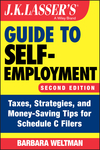Three Other Ways to Tap into Your Qualified Retirement Plan Savings
Usually, money in a 401(k) plan, a pension plan, or other qualified retirement plan is designed to provide retirement income and shouldn’t be touched until retiring from the job. However, in these tough times, many individuals need this money now and can’t wait until retirement. Here are three permissible ways to access retirement savings before retirement.
Plan Loans
Plans with individual accounts, such as 401(k) plans, can allow participants to borrow from their accounts. Like any other loan, proceeds are not taxable income. The tax law sets limits on how much can be borrowed and terms for the loan. Key points:
- Borrowing limit-generally the lesser of $50,000 or 50% of the account balance (assuming your accrued balance exceeds $20,000).
- Repayment requirements-generally the borrowed amount must be repaid in equal installments over a period of no more than five years. However, if the loan is used to buy a principal residence, a longer repayment period is permitted.
- Interest-this is set by the plan. It is not deductible if used for personal reasons (except for buying a home or for investment purposes to the extent of investment income). “Key” employees, such as business owners, cannot deduct interest in any event.
If you have a loan outstanding when you leave the company, it must be repaid within a set time fixed by the plan (typically 30 to 90 days). Failure to repay the loan transforms it into a taxable distribution.
Note: Plans are not required to allow such borrowing, so check with your plan administrator for details.
IRAs. These plans cannot permit loans. However, IRA owners can have limited access to their money by taking a distribution and repaying it within the 60-day rollover period. This option can be used once a year without having the distribution taxed or subject to penalty as long as the replacement of funds is completed within the 60-day rollover period.
Hardship Distributions
Qualified retirement plans generally must restrict distributions to separation from service (e.g., retirement), disability, or certain other reasons. However, 401(k) and similar plans will not lose their qualification if they permit hardship distributions. These are taxable distributions for immediate and heavy financial hardships where there are not other resources. Examples of hardships of the participant, spouse or dependent:
- Certain medical expenses
- Costs relating to the purchase of a principal residence
- Tuition and related educational fees and expenses
- Payments necessary to prevent eviction from, or foreclosure on, a principal residence
- Burial or funeral expenses
- Certain expenses for the repair of damage to your principal residence
Note: The distribution is taxable, and just because a plan allows a hardship distribution does not make it penalty free. The 10% early distribution penalty is avoided only if the hardship distribution is made after age 59½, on account of disability, or to pay medical expenses exceeding 7.5% of adjusted gross income.
In-Service Pensions
Usually, pension plans do not commence monthly payments until the employee terminates employment or reaches the plan’s normal retirement age (typically 65). However, under a change made by the Pension Protection Act of 2006, plans are allowed to make in-service payments to someone at least age 62 and who continues to work. Essentially, this break helps older employees who cut back on their work hours (perhaps involuntarily during these tough times); they can supplement their reduced salary by receiving pension payouts.
Grantor trust rules
Tax rules that tax the grantor of a trust on the trust income.



